The third camera on my rental list was the Mamiya 7, but I decided that instead the Fuji rangefinders would be a representative sample of a medium format RF instead. Even used prices for the Mamiya 6 were such that I couldn't seriously consider it, so instead I went straight to the Fujis. There are 4 variations of the same basic RF, made up of all the combinations of 6x7 or 6x9 frame size with a 90mm or 65mm lens. I rented the GW670III (90mm f/3.5, 6x7) and the GSW690III (65mm f/5.6, 6x9); I would have preferred both 6x9 cameras, but the rental place I use only carries the 670 version of the GW. As before, part 1 of this discussion will focus on handling, size, weight, usage, etc, and part 2 will show results from the 3 rolls of film I exposed with these cameras.
Size and weight are the big gains from this bodystyle when compared to MF SLRs, and the comparison pics here show that fairly clearly. The pictures show a GSW690 with a 30D + 200mm f/2.8L; sadly I forgot to take the comparison pictures with the Yashica D, but the relative size should be fairly clear.
While the body size is comparable to the 30D, the lens is much smaller. And the body is really just wider and taller, not deeper. With a wide or normal prime on the DSLR, the size would be very close, with the DSLR weighing slightly less, depending on the prime used. Versus the Yashica D, this is clearly a much larger camera; however, in exchange you get a wide angle lens instead of a normal, and 6x9 film area instead of 6x6, and the camera still fits in a bag easily.
In terms of handling, the Fujis are very easy to use, with a few caveats. Shutter speed and aperture controls are on the lens barrel, and can be turned together to preserve a correct exposure with a range of settings (old-school "program mode"). Viewing and focusing is via the viewfinder, which shows framelines and an RF patch. This is the first caveat. At least on the III models I had, I found the RF patch hard to see at times. I do sometimes have the same problem on my 35RC, but given the relative prices of these cameras, I'd expect better. I believe that the older I and II models have a different RF mechanism with a different looking patch, but I don't know if it's better or worse than the III's. The second, and more minor caveat, is that the built-in lens hood on the barrel can be a little loose, and slip down over the shutter/aperture controls (it covers them when fully retracted).
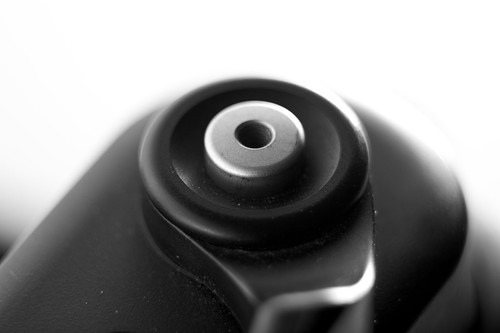
Fuji GSW690III Shutter Release; Canon 30D, Canon 200mm f/2.8L, Kenko extension tubes, Canon 430EX, LumoPro LP120
The other major downside of the fact that these cameras are rangefinders is the inability to do close up work. Even with the GW670, I would be unable to use it for food, or portraits other than environmental. To be fair, this was clear going in, and no surprise to me; these cameras work well as highly portable landscape/cityscape/etc cameras with a large negative size, and I knew that using them for anything else would be almost impossible. Still, if your needs include any sort of close up work, these would have to be a second camera, not an only/primary.
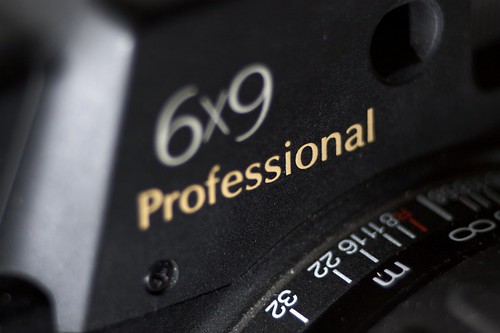
Fuji GSW690III Lettering; Canon 30D, Canon 200mm f/2.8L, Kenko extension tubes, Canon 430EX, LumoPro LP120
A major point in favor of these cameras, though, is the lens(es). While the GW has a fairly standard wide-normal 90mm lens, the GSW has a very nice 65mm lens, which on 6x9 behaves like a 28mm. If you're looking for a wide-angle fixed lens camera, this is excellent. The only minor quibble is the f/5.6, but I found that even on a gray day with 50 and 100 speed film, I was able to get easy exposures, and 400 speed would make it trivial. As far as frame sizes go, the 6x7 cameras are simply 6x9 cameras with a different film mask, advance gearing, and viewfinder framelines. Unless you really need the two extra shots a roll or hate the 3:2 aspect ratio, I'd carry the 6x9 for the extra negative size.
In their intended niche, however, these cameras are wonderful. Easy to carry, easy to use, with a nice wide-angle lens (or normal), and huge negative size. Part 2 of this discussion will look at the results from my outing in Golden Gate Park to see what results from these cameras look like.

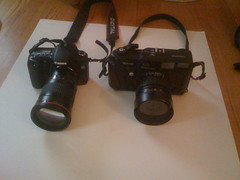
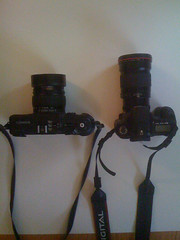
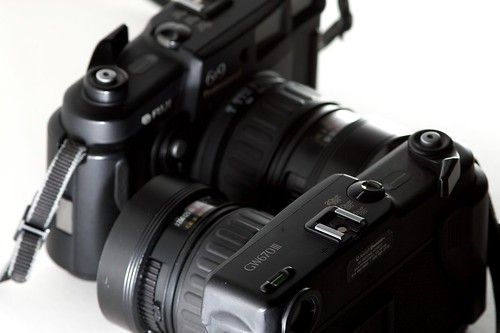
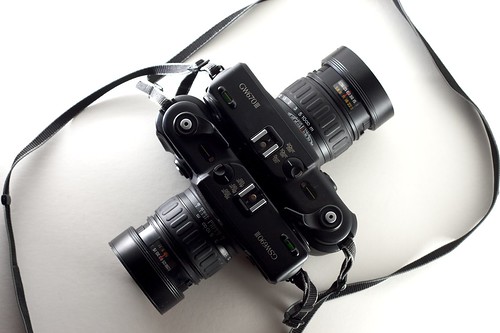

This comment has been removed by a blog administrator.
ReplyDeleteI just stumbled upon your blog, and I really enjoyed reading a lot of the posts. Thank you for sharing! :-)
ReplyDeleteReally an awesome share will visit here again for the updates..Thanks for the great information.
ReplyDelete